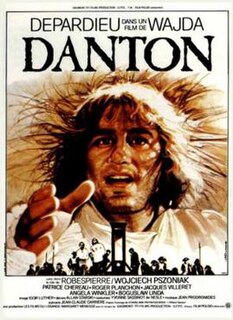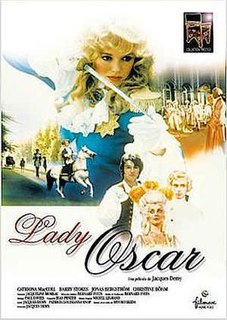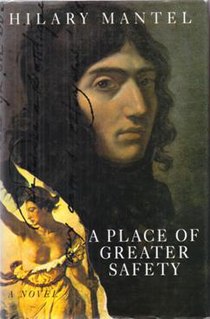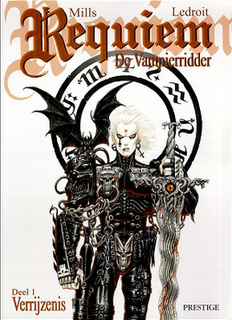 W
WAssassin's Creed Unity is an action-adventure video game developed by Ubisoft Montreal and published by Ubisoft. It was released in November 2014 for Microsoft Windows, PlayStation 4, and Xbox One, and in December 2020 for Stadia. It is the eighth major installment in the Assassin's Creed series, and the successor to 2013's Assassin's Creed IV: Black Flag. It also has ties to Assassin's Creed Rogue, which was released for the previous generation consoles on the same day as Unity.
 W
WCaptain of the Guard is a 1930 American musical film directed by John S. Robertson and Pál Fejös and starring Laura La Plante, John Boles and Sam De Grasse. It is set during the French Revolution, but was sufficiently unhistorical that an apology was included in the opening credit for any factual inaccuracies.
 W
WThe Chamber of Horrors was an original exhibition at Madame Tussauds in London, being an exhibition of waxworks of notorious murderers and other infamous historical figures. The gallery first opened as a 'Separate Room' in Marie Tussaud's 1802 exhibition in London and quickly became a success as it showed historical personalities and artifacts rather than the freaks of nature popular in other waxworks of the day. It closed permanently in April 2016.
 W
WLe Chevalier D'Eon is a 24-episode anime television series produced by Production I.G based on an original story by Tow Ubukata. The anime originally aired in Japan on WOWOW from August 19, 2006 to February 2, 2007. The story has also been adapted into a manga series written by Tow Ubukata and illustrated by Kiriko Yumeji, which was first published in 2005. The title character is loosely based on the historical figure Chevalier d'Éon, who lived in the middle of 18th-century, pre-Revolutionary France under the reign of Louis XV.
 W
WDanton is a 1921 German silent historical film directed by Dimitri Buchowetzki and starring Emil Jannings, Werner Krauss and Ossip Runitsch. It premiered in Berlin on 4 May 1921. It was based on the play Danton's Death by Georg Büchner.
 W
WDanton is a 1931 German historical drama film directed by Hans Behrendt and starring Fritz Kortner, Lucie Mannheim and Gustaf Gründgens. It depicts the dramatic downfall and execution of Georges Danton in 1794 at the hands of Maximilien Robespierre.
 W
WDanton is a 1983 French language film depicting the last weeks of Georges Danton, one of the leaders of the French Revolution. It is an adaptation of the 1929 play The Danton Case by Stanisława Przybyszewska.
 W
WDanton's Death was the first play written by Georg Büchner, set during the French Revolution.
 W
WDantons Tod is an opera by Gottfried von Einem to a libretto by Boris Blacher and Gottfried von Einem after Georg Büchner's 1835 play of the same name. Its first performance took place in Salzburg on 6 August 1947. It was revised in 1955.
 W
WI due sanculotti is a 1966 comedy film written and directed by Giorgio Simonelli.
 W
WThe Eight, published 1988, is American author Katherine Neville's debut novel. It is an adventure/quest novel in which the heroine, computer whiz Catherine Velis, must enter into a cryptic world of danger and conspiracy in order to recover the pieces of a legendary chess set once owned by Charlemagne, and buried for one thousand years.
 W
WThe Gods Are Athirst is a 1912 novel by Anatole France. It is set in Paris in 1793–1794, closely tied to specific events of the French Revolution.
 W
WThe Lady and the Duke is a 2001 period drama film by French director Éric Rohmer. The film was inspired by Ma vie sous la révolution, the colourful memoirs of Grace Elliott, an Edinburgh-born royalist caught up in the political intrigue following the French Revolution.
 W
WLady Oscar is a 1979 English-language romantic period drama film, based on the manga The Rose of Versailles by Riyoko Ikeda. The film was written and directed by Jacques Demy, with music composed by his regular collaborator Michel Legrand. The French-Japanese co-production was produced by Mataichiro Yamamoto for Kitty Films, Nippon TV, and Toho, and was filmed on location in France.
 W
WNapoléon is a 1927 silent French epic film written, produced, and directed by Abel Gance that tells the story of Napoleon's early years. On screen, the title is Napoléon vu par Abel Gance, meaning "Napoleon as seen by Abel Gance". The film is recognised as a masterwork of fluid camera motion, produced in a time when most camera shots were static. Many innovative techniques were used to make the film, including fast cutting, extensive close-ups, a wide variety of hand-held camera shots, location shooting, point of view shots, multiple-camera setups, multiple exposure, superimposition, underwater camera, kaleidoscopic images, film tinting, split screen and mosaic shots, multi-screen projection, and other visual effects. A revival of Napoléon in the mid-1950s influenced the filmmakers of the French New Wave. The film used the Keller-Dorian cinematography for its color sequences.
 W
WOrphans of the Storm is a 1921 American silent drama film by D. W. Griffith set in late-18th-century France, before and during the French Revolution.
 W
WA Place of Greater Safety is a 1992 novel by Hilary Mantel. It concerns the events of the French Revolution, focusing on the lives of Georges Danton, Camille Desmoulins, and Maximilien Robespierre from their childhood through the execution of the Dantonists, and also featuring hundreds of other historical figures.
 W
WReign of Terror is a 1949 American film noir directed by Anthony Mann and starring Robert Cummings, Richard Basehart and Arlene Dahl. The film is set during the French Revolution. Plotters seek to bring down Maximilien Robespierre and end his bloodthirsty Reign of Terror.
 W
WThe Reign of Terror is the eighth serial in the British science fiction television series Doctor Who, which was first broadcast on BBC1 in six weekly parts from 8 August to 12 September 1964. It was written by Dennis Spooner and directed by Henric Hirsch. In the serial, the First Doctor, his granddaughter Susan, and teachers Ian Chesterton and Barbara Wright arrive in France during the period of the French Revolution known as the Reign of Terror, where they become involved with prisoners and English spies.
 W
WRequiem Chevalier Vampire was a Franco-British comic, published by Nickel Editions. It was translated in English and published by the magazine Heavy Metal in the United States. It was also translated in German and published in Germany by Kult Editions as Requiem Der Vampirritter.
 W
WThe Return of the Scarlet Pimpernel is a 1937 British thriller film directed by Hanns Schwarz and starring Barry K. Barnes, Sophie Stewart, Margaretta Scott and James Mason. It is a sequel to the 1934 film The Scarlet Pimpernel based on the stories by Baroness Emmuska Orczy.
 W
WLa Révolution française is a two-part 1989 film, co-produced by France, Germany, Italy, the United Kingdom and Canada for the 200th anniversary of the French Revolution. The first part, titled La Révolution française: les Années lumière was directed by Robert Enrico. The second part, La Révolution française: les Années terribles, was directed by Richard T. Heffron. The full film runs at 360 minutes, but the edited-for-television version is slightly longer.
 W
WThe Robespierre Monument was one of the first monuments erected in the Russian Soviet Federative Socialist Republic, raised in Moscow on 3 November 1918 – just ahead of the first anniversary of the October Revolution, which had brought the Bolsheviks to power. It depicted Maximilien de Robespierre, a prominent figure of the French Revolution. Located in Alexander Garden, it had been designed by the sculptor Beatrice Yuryevna Sandomierz. Created as part of the "monumental propaganda" plan, the monument was commissioned by Vladimir Lenin, who in an edict referred to Robespierre as a "Bolshevik avant la lettre". It was only one of several planned statues depicting French revolutionaries – others were to be made of Georges Danton, François-Noël Babeuf and Jean-Paul Marat, although only the one of Danton was never completed.
 W
WThe Scarlet Pimpernel is a 1934 British adventure film directed by Harold Young and starring Leslie Howard, Merle Oberon, and Raymond Massey. Based on the 1905 play by Baroness Orczy and Montagu Barstow and the classic 1905 adventure novel by Orczy, the film is about an eighteenth-century English aristocrat (Howard) who leads a double life, passing himself off as an effete aristocrat while engaged in a secret effort to rescue French nobles from Robespierre's Reign of Terror. The film was produced by Alexander Korda. Howard's portrayal of the title character is often considered the definitive portrayal of the role.
 W
WThe Scarlet Pimpernel is a 1982 British romantic adventure television film set during the French Revolution. It is based on the novels The Scarlet Pimpernel (1905) and Eldorado (1913) by Baroness Emmuska Orczy, and stars Anthony Andrews as Sir Percy Blakeney/the Scarlet Pimpernel, the protagonist, Jane Seymour as Marguerite St. Just, the love interest, and Ian McKellen as Chauvelin, the antagonist.
 W
WThe Scarlet Pimpernel is a series of television drama programmes loosely based on Baroness Emmuska Orczy's series of novels, set during the French Revolution.
 W
WVan Loon's Lives is a book by the Dutch-American writer Hendrik Willem van Loon published in 1942. Its full title, deliberately written in a manner already archaic at the time of writing, is Van Loon's Lives: Being a true and faithful account of a number of highly interesting meetings with certain historical personages, from Confucius and Plato to Voltaire and Thomas Jefferson, about whom we had always felt a great deal of curiosity and who came to us as dinner guests in a bygone year.